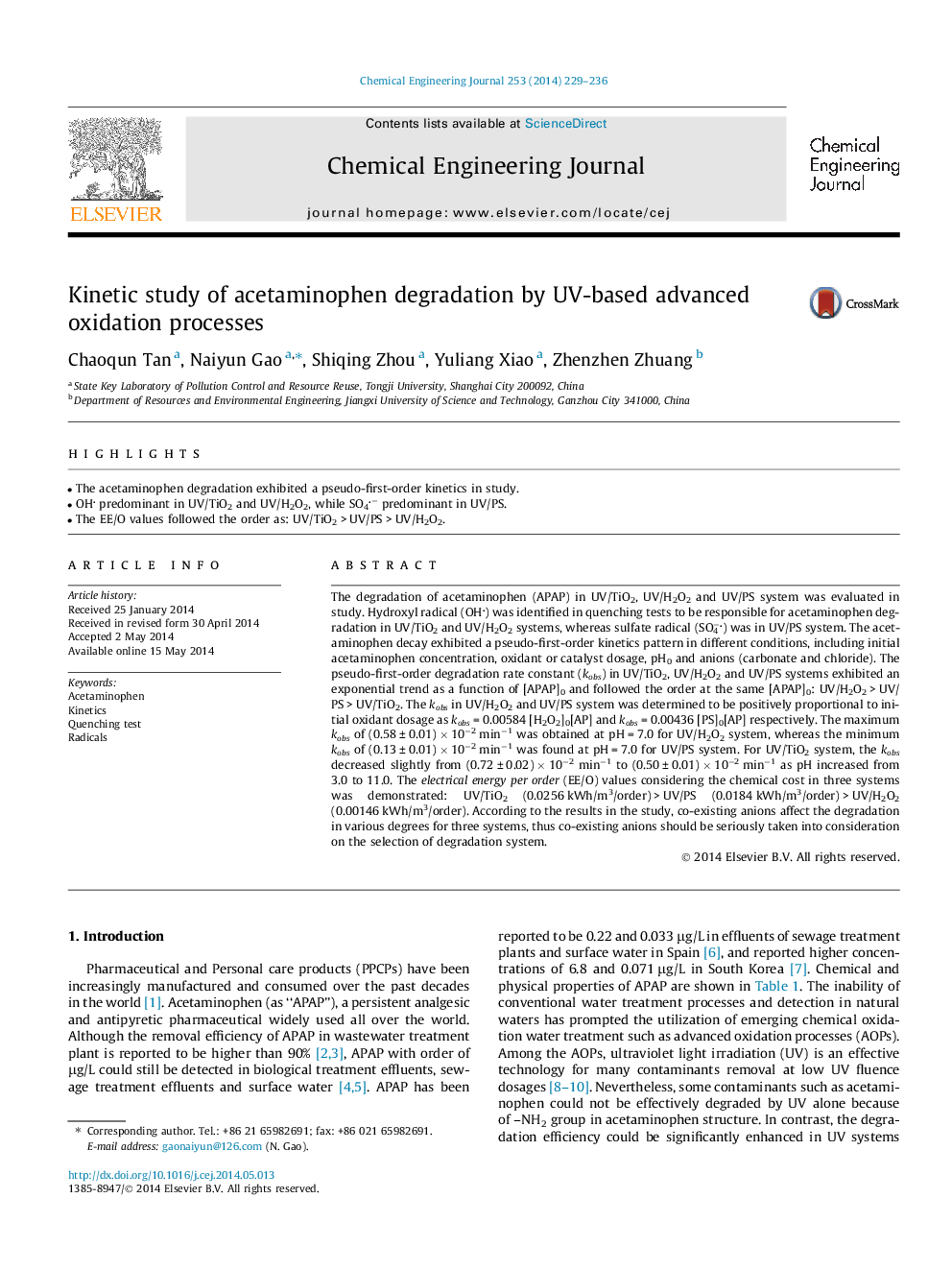| کد مقاله | کد نشریه | سال انتشار | مقاله انگلیسی | نسخه تمام متن |
|---|---|---|---|---|
| 147185 | 456387 | 2014 | 8 صفحه PDF | دانلود رایگان |

• The acetaminophen degradation exhibited a pseudo-first-order kinetics in study.
• OH predominant in UV/TiO2 and UV/H2O2, while SO4− predominant in UV/PS.
• The EE/O values followed the order as: UV/TiO2 > UV/PS > UV/H2O2.
The degradation of acetaminophen (APAP) in UV/TiO2, UV/H2O2 and UV/PS system was evaluated in study. Hydroxyl radical (OH) was identified in quenching tests to be responsible for acetaminophen degradation in UV/TiO2 and UV/H2O2 systems, whereas sulfate radical (SO4−) was in UV/PS system. The acetaminophen decay exhibited a pseudo-first-order kinetics pattern in different conditions, including initial acetaminophen concentration, oxidant or catalyst dosage, pH0 and anions (carbonate and chloride). The pseudo-first-order degradation rate constant (kobs) in UV/TiO2, UV/H2O2 and UV/PS systems exhibited an exponential trend as a function of [APAP]0 and followed the order at the same [APAP]0: UV/H2O2 > UV/PS > UV/TiO2. The kobs in UV/H2O2 and UV/PS system was determined to be positively proportional to initial oxidant dosage as kobs = 0.00584 [H2O2]0[AP] and kobs = 0.00436 [PS]0[AP] respectively. The maximum kobs of (0.58 ± 0.01) × 10−2 min−1 was obtained at pH = 7.0 for UV/H2O2 system, whereas the minimum kobs of (0.13 ± 0.01) × 10−2 min−1 was found at pH = 7.0 for UV/PS system. For UV/TiO2 system, the kobs decreased slightly from (0.72 ± 0.02) × 10−2 min−1 to (0.50 ± 0.01) × 10−2 min−1 as pH increased from 3.0 to 11.0. The electrical energy per order (EE/O) values considering the chemical cost in three systems was demonstrated: UV/TiO2 (0.0256 kWh/m3/order) > UV/PS (0.0184 kWh/m3/order) > UV/H2O2 (0.00146 kWh/m3/order). According to the results in the study, co-existing anions affect the degradation in various degrees for three systems, thus co-existing anions should be seriously taken into consideration on the selection of degradation system.
Journal: Chemical Engineering Journal - Volume 253, 1 October 2014, Pages 229–236